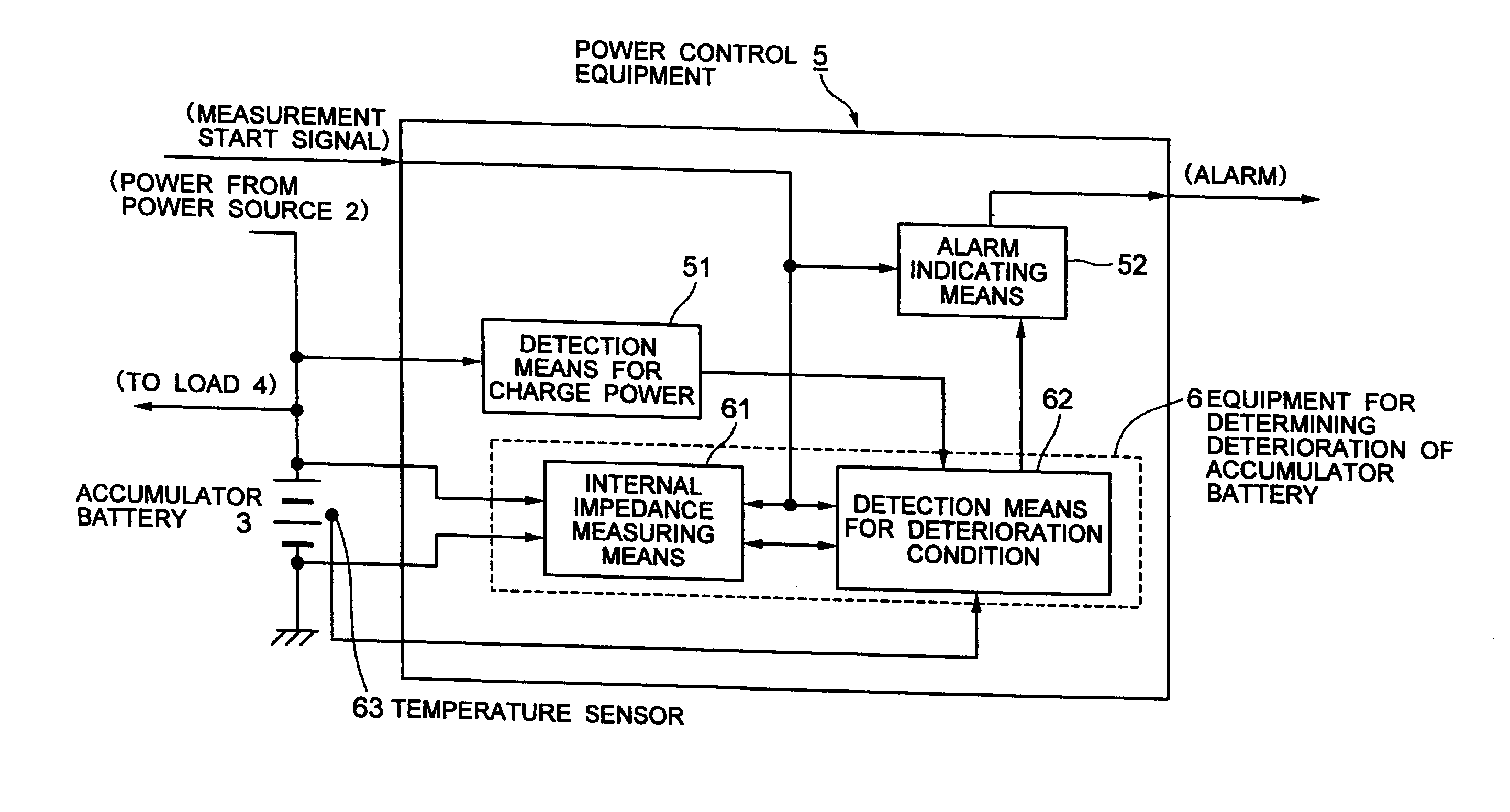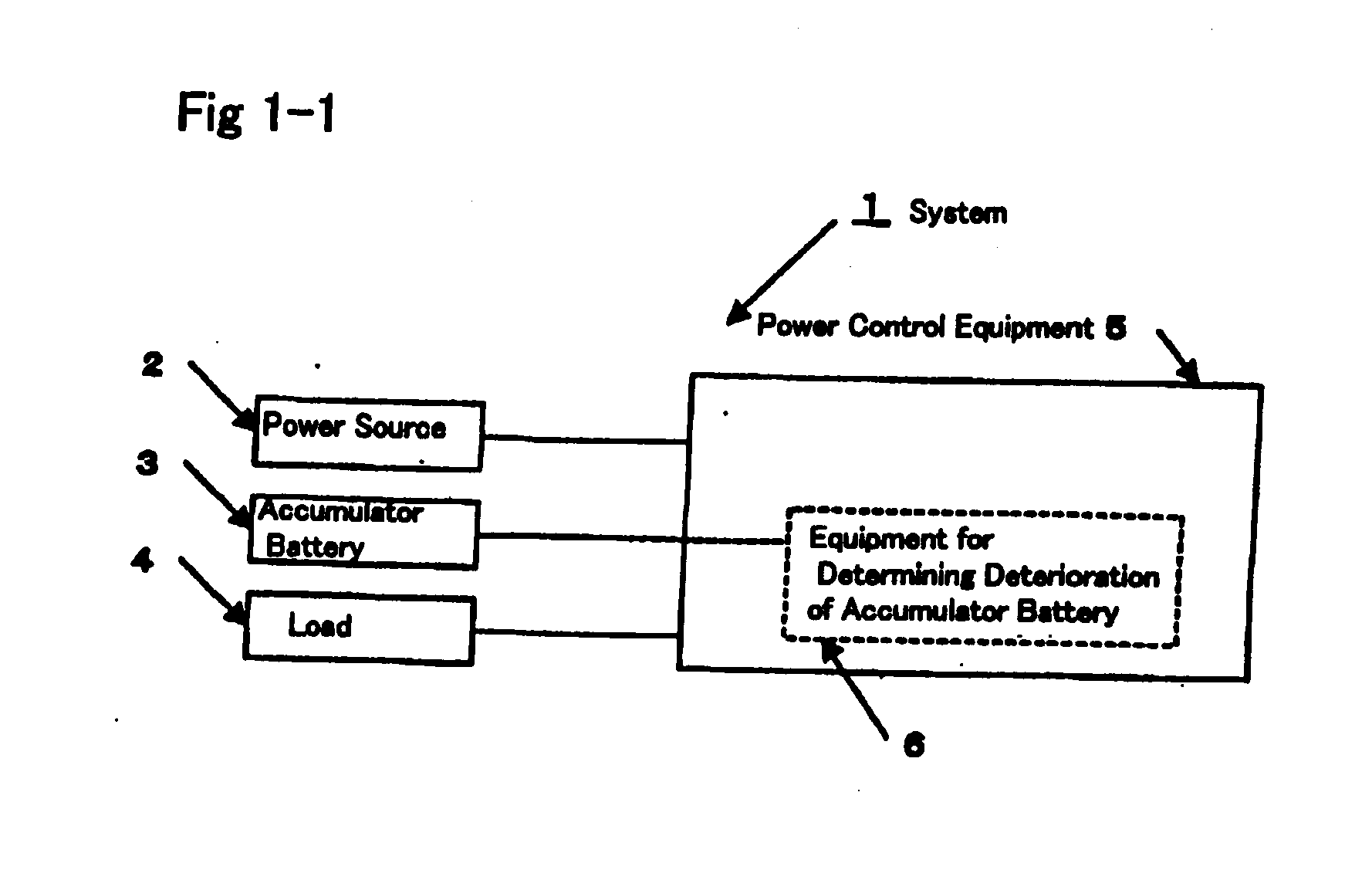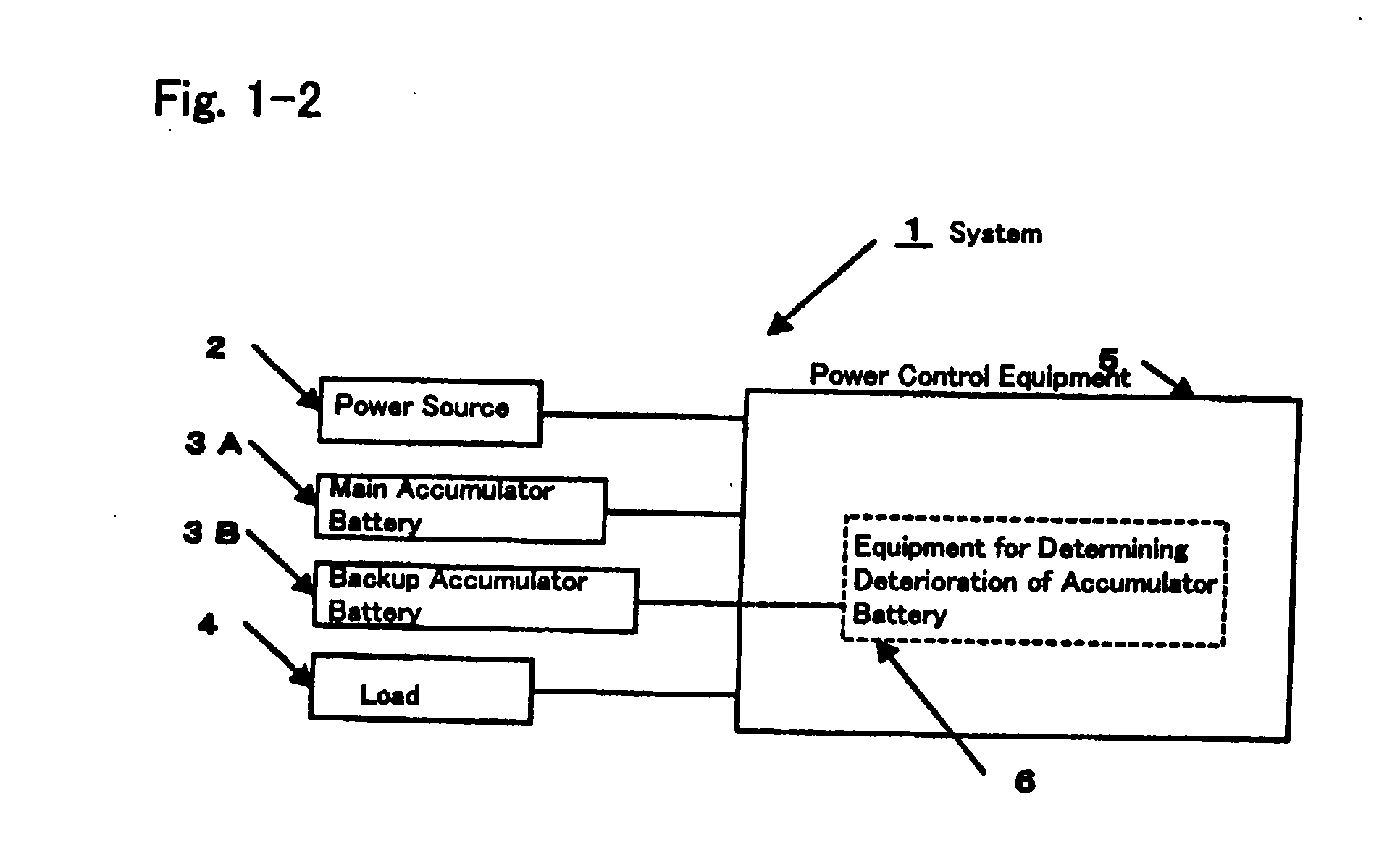Method for determining deterioration of accumulator battery, method for measuring internal impedance of secondary battery, equipment for measuring internal impedance of secondary battery, equipment for determining deterioration of secondary battery, and power supply system
a technology for accumulator batteries and secondary batteries, which is applied in the field of determining the deterioration of accumulator batteries, can solve the problems of complex equipment, increased equipment costs, and inability to precisely determine the deterioration of secondary batteries, so as to reduce the deterioration, simplify and low-cost construction, and determine the deterioration of active accumulator batteries. precisely and quickly
- Summary
- Abstract
- Description
- Claims
- Application Information
AI Technical Summary
Benefits of technology
Problems solved by technology
Method used
Image
Examples
first embodiment
THE FIRST EMBODIMENT
[0427]FIG. 3-1 is a block diagram showing the rough construction of a power supply system according to the first embodiment of the present invention. In FIG. 3-1, the power supply system comprises a secondary battery 10, a current sensor 11, a voltage sensor 12, a control part 13, a storage part 14, a charge circuit 15 and a discharge circuit 16 so that various load 20 is supplied with electric power from the secondary battery 10.
[0428] In the construction of FIG. 3-1, for example, such accumulator battery as that used for such equipments as observational equipment and communication equipment, and a lead storage battery for vehicle is known as the secondary battery 10 supplying load 20 with electric power. Here, FIG. 2-2 shows an equivalent circuit of the secondary battery. As shown in FIG. 3-2, the secondary battery 10 may be expressed with use of the equivalent circuit which has equivalent circuit for a positive electrode, a battery electrolyte, a negative ele...
PUM
 Login to View More
Login to View More Abstract
Description
Claims
Application Information
 Login to View More
Login to View More - R&D
- Intellectual Property
- Life Sciences
- Materials
- Tech Scout
- Unparalleled Data Quality
- Higher Quality Content
- 60% Fewer Hallucinations
Browse by: Latest US Patents, China's latest patents, Technical Efficacy Thesaurus, Application Domain, Technology Topic, Popular Technical Reports.
© 2025 PatSnap. All rights reserved.Legal|Privacy policy|Modern Slavery Act Transparency Statement|Sitemap|About US| Contact US: help@patsnap.com



